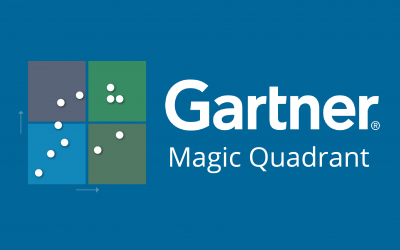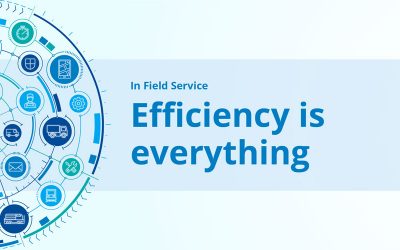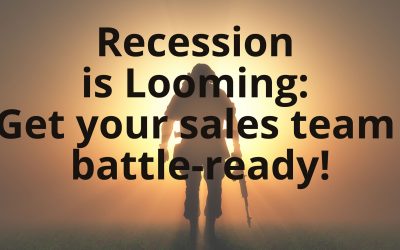No Results Found
The page you requested could not be found. Try refining your search, or use the navigation above to locate the post.

Gartner went on to state:
The page you requested could not be found. Try refining your search, or use the navigation above to locate the post.
Discover More Stories

The companies that get it right reap the rewards. Consider the stats:
To keep customers engaged, however, companies must compete in a marketplace where the benchmarks keep rising. Why? Exposed to the offerings of best-in-class digital juggernauts such as Amazon, consumers develop a taste for the most cutting-edge tech – and soon come to think of it as normal – whether they’re aware of it or not.
What are the drivers? A major one is advancement in AI. Today, artificial intelligence underlies an increasing number of customer service interactions – at both the front and back end. From brand spokesperson to service agent assistant, AI is remaking the interface between brands and their customers.
ow? Here are some of the ways.
AI is many customers’ first touchpoint.
Many of today’s consumers would rather find a solution to a query without having to dial into a call centre or deal with a service agent over the phone. Brands know this, and it’s why chatbots are an increasing number of brands’ first line of contact.
Easily accessible via a messenger window, bots are great at dealing with simple and medium-complexity queries. The result is quick customer resolution as well as decreased workload for the company’s human agents – to whom a bot might refer a customer in the case of a complex query.
By filtering incoming queries in this way, companies are realising that a human touch isn’t always necessary. Rather, it’s efficiency that customers want.
AI – which is able to draw on a range of data spanning past brand interactions (and often external data, too) – isn’t working from a blank slate. Rather, it’s able to contextualise queries, making sure replies are targeted, helpful and to the point.
AI is flexible.
Today’s customers take digital dynamism for granted. Daily immersion in tech means multi-device connectivity – and interaction on their own terms. For many, their nearest bank branch is an app. Their nearest retail outlet, their mobile. Brands have to keep pace. Access to a device means access to AI, whether via a messaging app or website.
AI is predictive.
Consumer queries are rarely totally unique. An issue or question raised by one customer is likely to soon be voiced by another. AI comes into its own in this area.
On one hand, when the same query is raised by a number of consumers, AI begins to learn. By piecing together the reasons behind a specific type of query, AI can learn to provide more helpful and targeted solutions to subsequent customers – having found what resolution worked best for those who came before.
More importantly, AI is able to predict queries before they happen. Through IoT-enabled devices, weather forecasts, inventory management services and more, AI can now anticipate when a customer is likely to call in, and why.
The result is the ability to pre-empt queries and surprise customers with helpful suggestions, at just the right time.
Building Business Dynamism
Microsoft Dynamics 365 offers an embedded suite of advanced AI capabilities, capable of tackling complex scenarios end to end. Here are four ways:
Want to find out how you can infuse AI into your customer service?
See our AI-enabled customer service solution.
1 Shifting the Loyalty Curve: Mitigating Disloyalty by Reducing Customer Effort by the Corporate Executive Board (CEB)
2 2016 State of Global Customer Service Report, Microsoft
The page you requested could not be found. Try refining your search, or use the navigation above to locate the post.
Discover More Stories

Conclusion: customers love efficiency. They stay loyal to companies able to offer it. However, very few businesses are able to offer the kind of service that keeps customers coming back. If you’re one of the few that can, you’ve got a powerful market differentiator – one that can allow you to carve out a niche in the market.
Here are 4 ways the right toolset can drive efficiency for that market-leading edge.
1. Intelligent Scheduling.
A great top-down view is key to optimising service delivery. If dispatchers can access real-time information on where technicians are, accurate, efficient scheduling becomes possible. Workloads and resources can be better balanced too, and more appointments scheduled per day. The result: productivity gets a massive boost.
On-site assistance should be carried out only when necessary. The right technology can help you detect, troubleshoot and resolve issues remotely when possible. Remote monitoring and predictive maintenance also become possible when you have the right tools. Moreover, systems can be designed to ask customers the right questions upfront. Do this and you can ensure you dispatch technician only when necessary – and that when you do, you always send the right person for the job.
Admin is the enemy. It eats into energy and resources. By streamlining the back office, your time is far better spent. The right technology means that client emails, phone calls and appointments can be monitored at the click of a button, and stored in one place, against their client record. Clients can also be kept informed at any stage of the engagement, with updates being sent by staff from any device. Further, when you have the ability to generate reports instantly, you can prioritise the most important clients and ensure you always provide great experiences to your customers.
Field service organisations have tons of info to keep track of. And while background information is key, it can quickly become a burden. Technology can provide key alerts and prompts, making insights actionable. For example, when service contracts, warranties and installed products are kept up to date, business flows far more smoothly. Driving additional revenue becomes possible too. Accurate contract information can ensure you are offering renewals at the right time, and not letting any contracts expire.
Get in touch.
The page you requested could not be found. Try refining your search, or use the navigation above to locate the post.
Discover More Stories

Does your company deal with data from individuals or companies in the European Union (EU)? If so, read on.
Here in South Africa we are familiar with the impending PoPI Act. But if you have clients that are European Citizens, or based in the EU you’ll also have to navigate a new piece of legislation: GDPR (the General Data Protection Regulation).
The GDPR: a 5-second overview
At core, The General Data Protection Regulation (or GDPR) is about safeguarding the privacy of individuals and companies in the EU, and reflects the implementation of the Digital Single Market Strategy.
What will the GDPR do?
The GDPR will place new rules on companies that deal with EU residents. It will also apply to companies that collect or analyse data tied to EU residents, no matter where they are located.
To do this, the GDPR establishes global requirements governing how companies manage and protect personal data – and respect individual choice. Importantly, it is a law that will apply no matter where the relevant data is sent, processed, or stored.
When is it due to take effect?
The GDPR comes into effect on 25 May 2018.
What will the impacts be?
Depending on what data a company holds, the GDPR may mean a number of changes. These may include updates to personal privacy policies or strengthening how data is protected.
What are some of the key elements of the GDPR?
Does the GDPR apply to my business?
The GDPR applies to companies (operators or controllers) in the EU.
It also applies to those outside the EU who offer goods and services to, or collect personal data from, EU residents.
What kind of data does the GDPR consider ‘personal data’?
The GDPR considers personal data to be any information related to an identified – or identifiable –natural person. This relates to direct identification data (such as a legal name). However, it also covers indirect identification data (data that makes it clear who is being referenced).
Personal data also includes online identifiers (such as IP addresses and mobile device IDs) and location data.
I use Dynamics 365. What types of data might be affected?
Where do I begin? Dynamics 365 users have four stages to follow in the journey toward GDPR compliance: discover, manage, protect and report.
Step 1 – Discover: Companies need to identify what personal data they hold have and where that data rests. This means both searching for and identifying the relevant personal information and then classifying it.
Step 2 – Manage: This relates to governing how personal data is used and accessed. This means, among other things, putting in place a governance system that can: notify subjects about how their personal data will be processed, get consent from data subjects around the processing of their personal data, provide a way for subjects to ask that processing of their data be stopped, correct inaccurate or incomplete data, transfer and save data. The system should also make it clear how data requests are processed and resolved.
Step 3 – Protect: Companies need to establish security controls to prevent, detect, and respond to data vulnerabilities and data breaches. Companies must put in place data privacy and security controls that ensure the confidentiality, integrity and availability of personal data. Encryption is one tool that satisfies the GDPR requirements.
Step 4 – Report: To show GDPR compliance through reporting, companies need to maintain an audit trail of all processing activities, requests and their resolution. Companies will also need to track and record flows of personal data into and out of the EU and third-party service providers. Moving toward GDPR compliance needn’t be an involved or difficult process, but companies should start thinking today about the steps they may need to take. At The CRM Team, we’re helping our customers keep in step with this legislation. There are many ways this can be done, but our preferred platform is Microsoft Dynamics 365 – a suite of intelligent business applications that brings all your customer information together in one place.
The page you requested could not be found. Try refining your search, or use the navigation above to locate the post.
Discover More Stories

Don’t let this take your sales team by surprise. Changing market conditions can be an opportunity for the well prepared, but can also catch the unprepared sleeping. A 2008 Bain & Co. study found that during the last recession more than 20% of companies in lower quartile in their industry jumped to the top quartile – that’s a huge jump! They also found that more than 20% of ‘leadership’ companies fell from the top quarter into the bottom quarter!
Those sales teams who are prepared can see massive growth, but alternatively, those who are not can see a massive drop in sales.
Here’s four things your sales team should do to prepare to thrive during the next recession.
During a recession the game changes, so you want to be in a position where you can easily respond to change. The pressure of difficult times often forces efficiencies and cost-savings. But why wait until times are difficult? Reshape your sales team now and take the advantage. While your rivals are doing forced cost-savings you can be focussed on taking advantage of the changing market conditions. Don’t wait until you are forced to, prepare now.
During a recession, customers spend less so sales teams need to increase their share of the customer rather than a share of the market. What this means is that you are more likely to meet your targets by up-selling and cross-selling to your customer base than reaching out to acquire new customers. This makes sense because it costs up to ten times more to acquire a new customer than to sell to an existing one.[1]
One of the first things to be reduced during a recession are marketing and sales budgets. With reduced money and head count acquiring new customers becomes harder. So, if you want to meet your targets it’s much easier to look at your current customer base for up-sell and cross-sell opportunities. This will help you maintain the status quo but if you’re wise you’ll also…
[1] Pricing for Profitability: Activity-Based Pricing for Competitive Advantage By John L. Daly (2002), p85. Published by John Wiley and Sons. ISBN 0471221597
During boom times, it works to be experimental and explore different customer types. But when things are tighter, it makes sense to know who your most profitable customers are and target your energies at them – and people like them. Once you have done this, if you really want to excel during a down turn you should…
It sounds counter intuitive but a McGraw-Hill Laboratory Study[2] showed that companies that continued strategic spending during a recession out-performed those that didn’t. And they also experienced a revenue growth of 275% during the first year of recovery. If you think about it, if everybody else pulls their marketing/sales spend, then things will be cheaper and your spend can have a greater reach. If you prepare now, you can store up an arsenal to spend during the down turn, and see a much greater bang for your buck than you’re achieving now.
[2] McGraw Hill Laboratory of Advertising Performance (LAP). 1985.
Sounds good, you may be thinking. But why are we at The CRM Team writing this article? While we make it our business to help sales teams flourish generally, we have lots of experience at helping sales teams become more agile, and target their customers better.
We’d love to help you prepare for the next downturn, so that you don’t just survive, but actually increase your sales.
Compared to aggressively hiring new sales representatives, CRM is a technology that can be implemented rapidly with a great return on investment. It makes sense for any company. Put simply, CRM can provide real business benefits for your sales team in times where every dollar counts.
The page you requested could not be found. Try refining your search, or use the navigation above to locate the post.
Discover More Stories
Recent Comments